In After Effects, you have the option to work with two different camera types, each offering specific advantages and areas of application. Often, the differences and the selection of the right camera can be confusing, especially when you're trying to animate simple movements. In this guide, we dive deep into the features and benefits of the so-called one-node and two-node cameras to make working with 3D elements easier for you.
Main Insights
- Use of one-node and two-node cameras.
- The choice of camera type affects animation and positioning.
- The one-node camera allows for simpler movements without a target point.
Step-by-step guide to using camera types in After Effects
First, I want to show you how to optimize your camera functions so you don’t have to create unnecessary animations for target points. Many users struggle to control their camera in After Effects, especially when it comes to animating simple movements. Here’s how you can improve that.
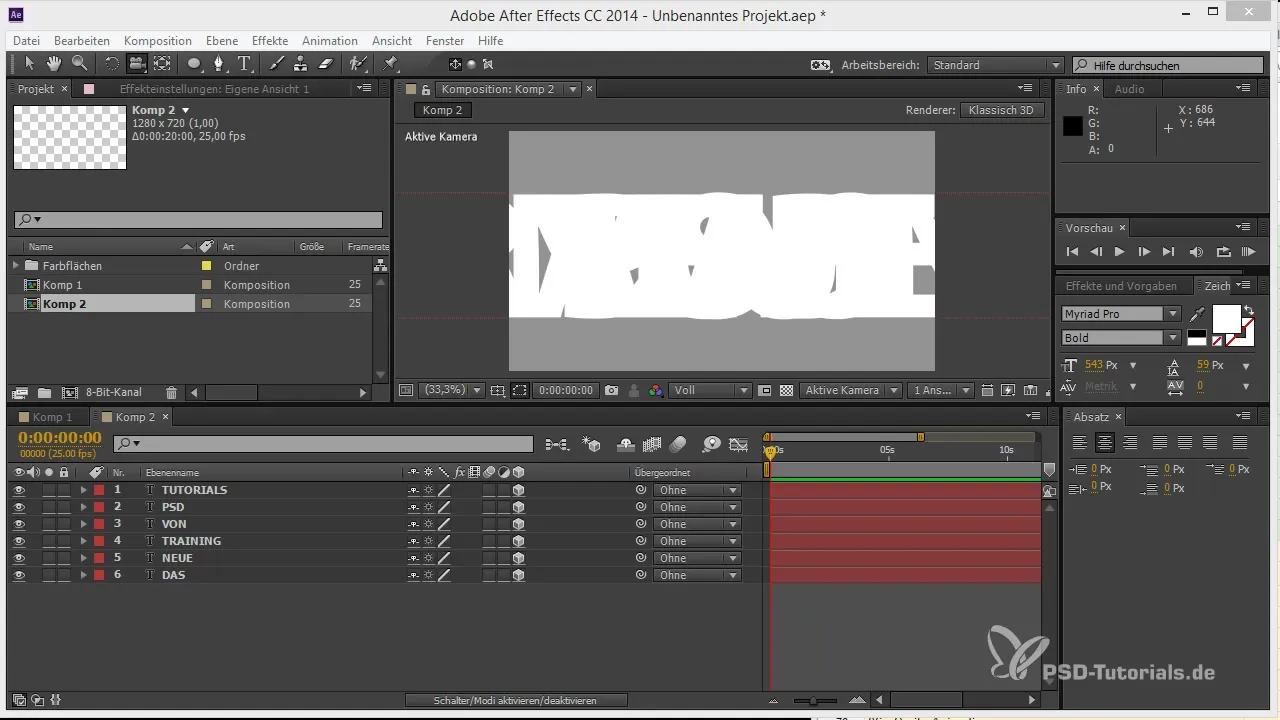
Start by preparing your scene. For this, you insert several elements into your project that you want to arrange sequentially. This is done by arranging them at different depths so that you achieve a nice 3D effect.
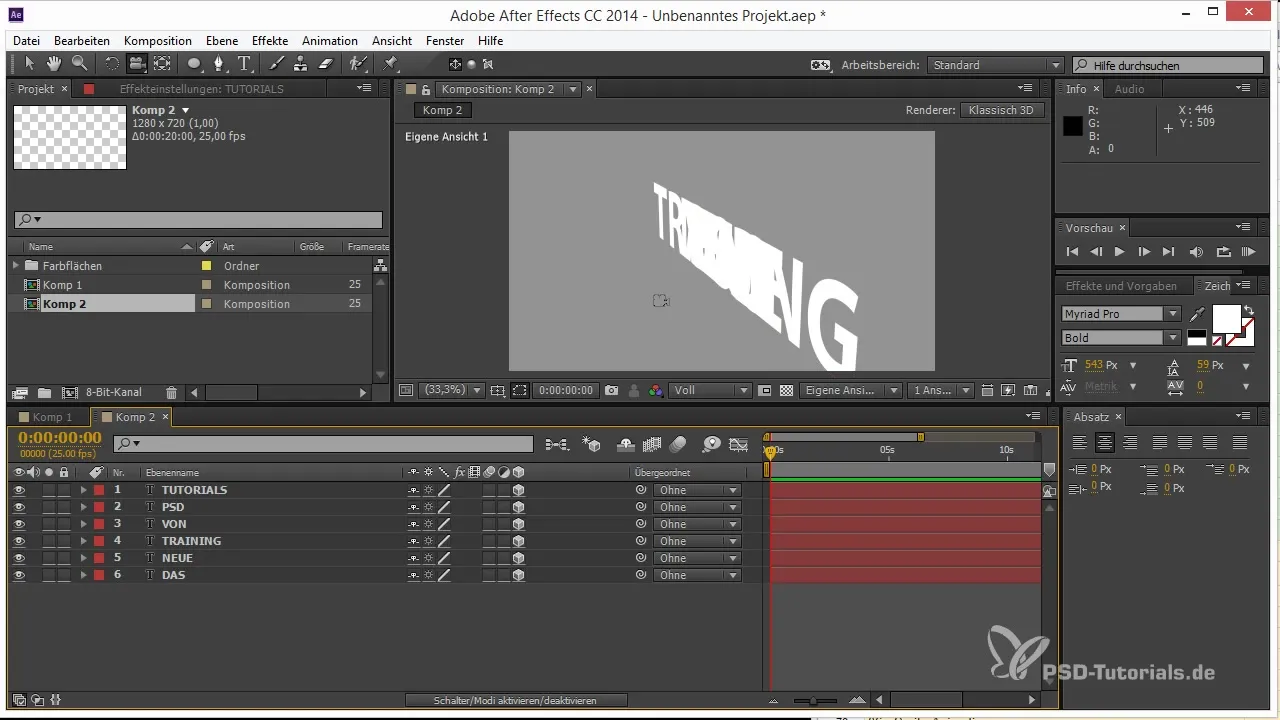
To arrange the elements correctly, go through the layers and position them one after the other at the desired distance. You can achieve this by adjusting the position of each layer. Local positions will help you so that each new layer is positioned relative to the previous one.
To create a greater distance between elements, it's useful to work with a specific gap, like 10,000 pixels. This keeps your workspace organized and ensures that the elements are clearly visible in the final rendering.
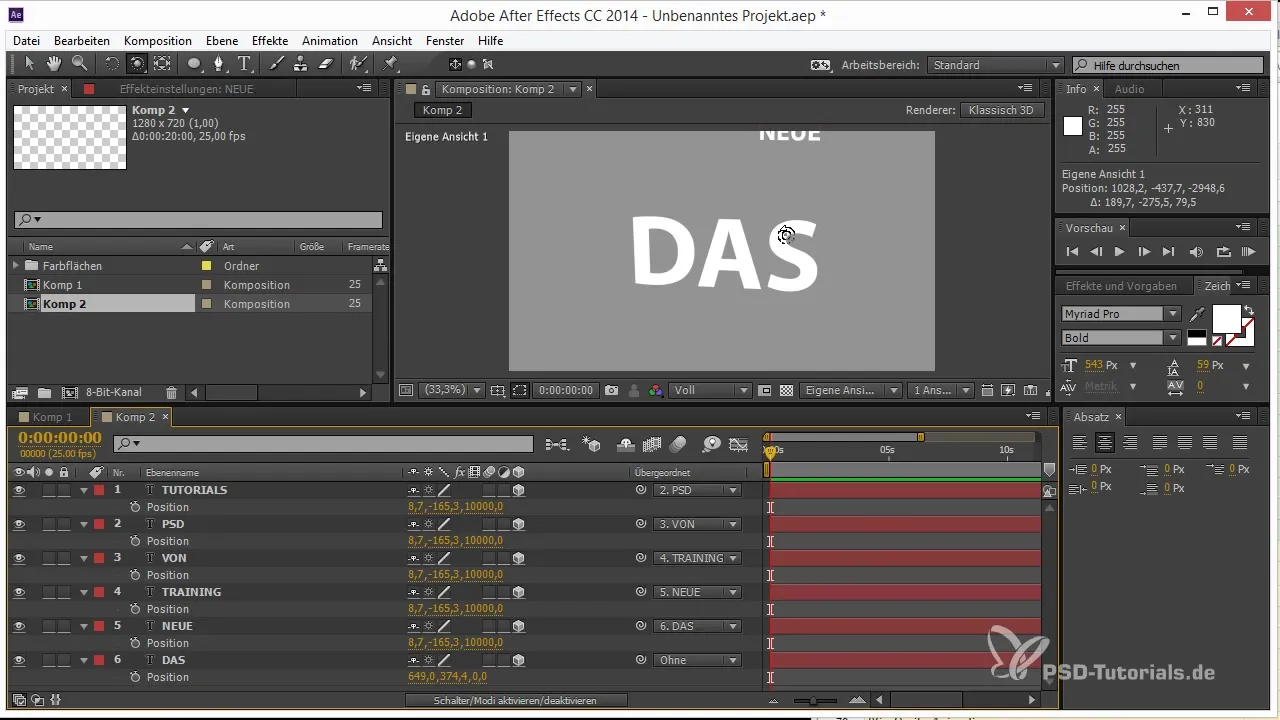
Once you have arranged all elements in the desired order, add a new camera. To do this, click on the camera icon and choose the aperture setting to create depth of field. This allows for a more realistic representation of the objects in your composition.
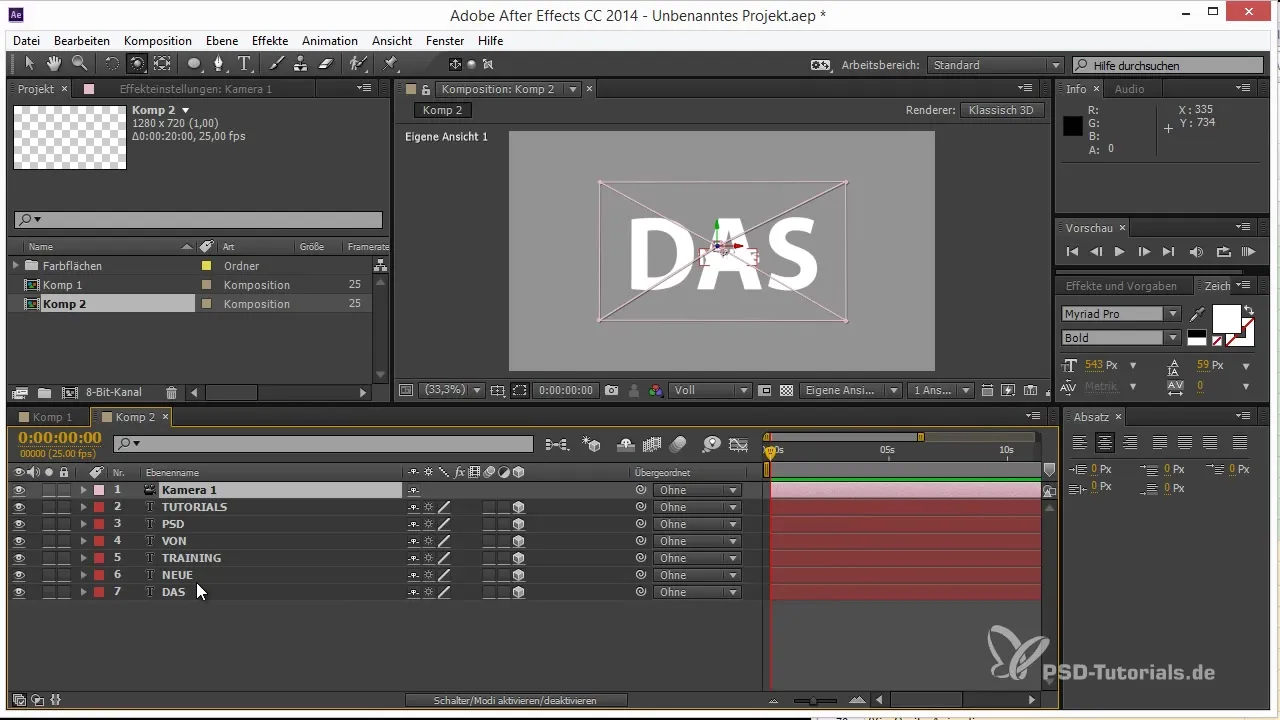
Now, when you move the camera, observe how the camera's target point affects the result. By default, the target point is always maintained, which means you need to animate not only the camera’s position but also the viewpoint. This can become cumbersome with simple movements.
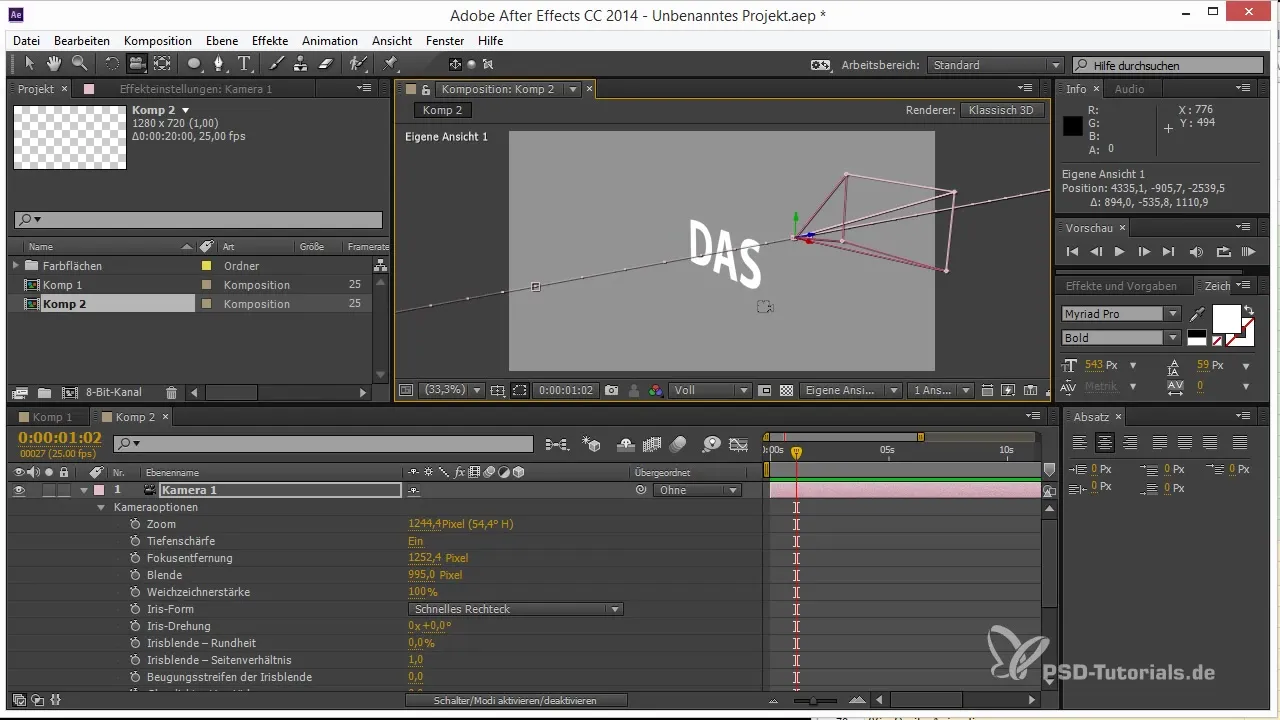
Here comes the actual solution: Double-click the camera to open the settings. Disable the settings for the two-node camera and enable the one-node camera. This setting allows you to control the camera solely by changing its position without having to worry about a target point.
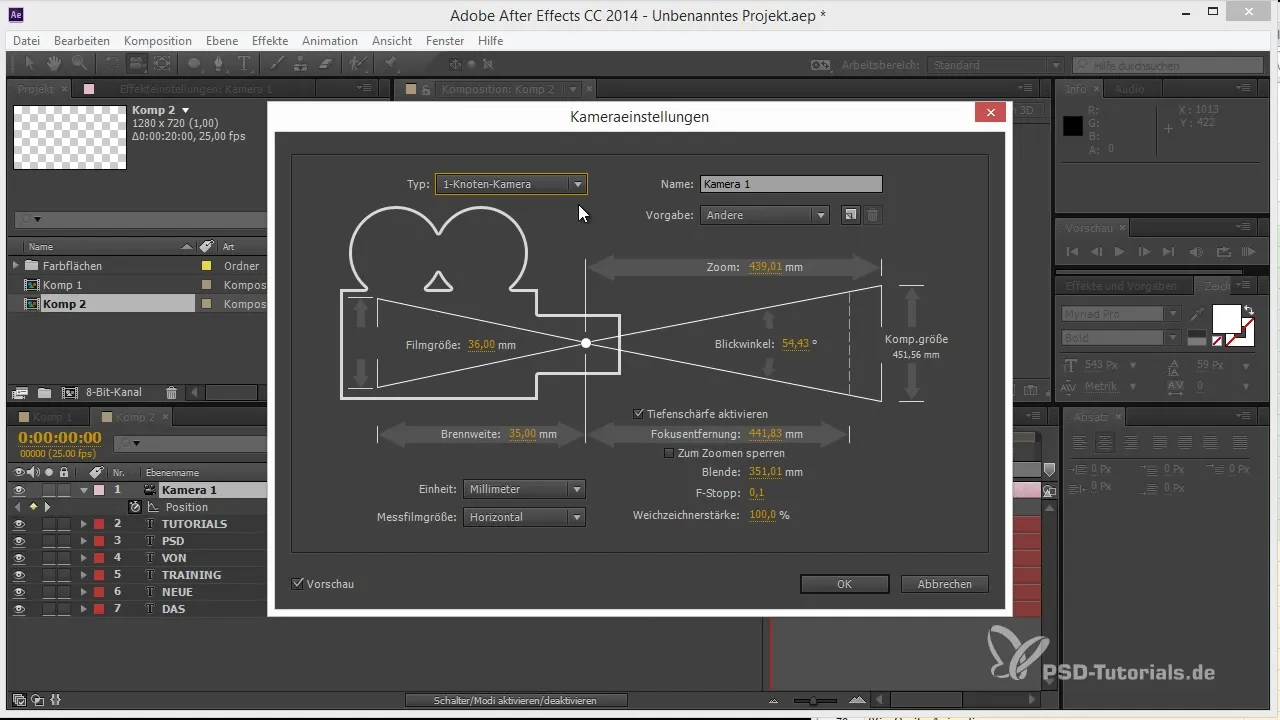
With the one-node camera, you can now work practically without the target point interfering in your animations. This is especially useful when animating movements that are not directed at a specific point. You now have more control and flexibility.
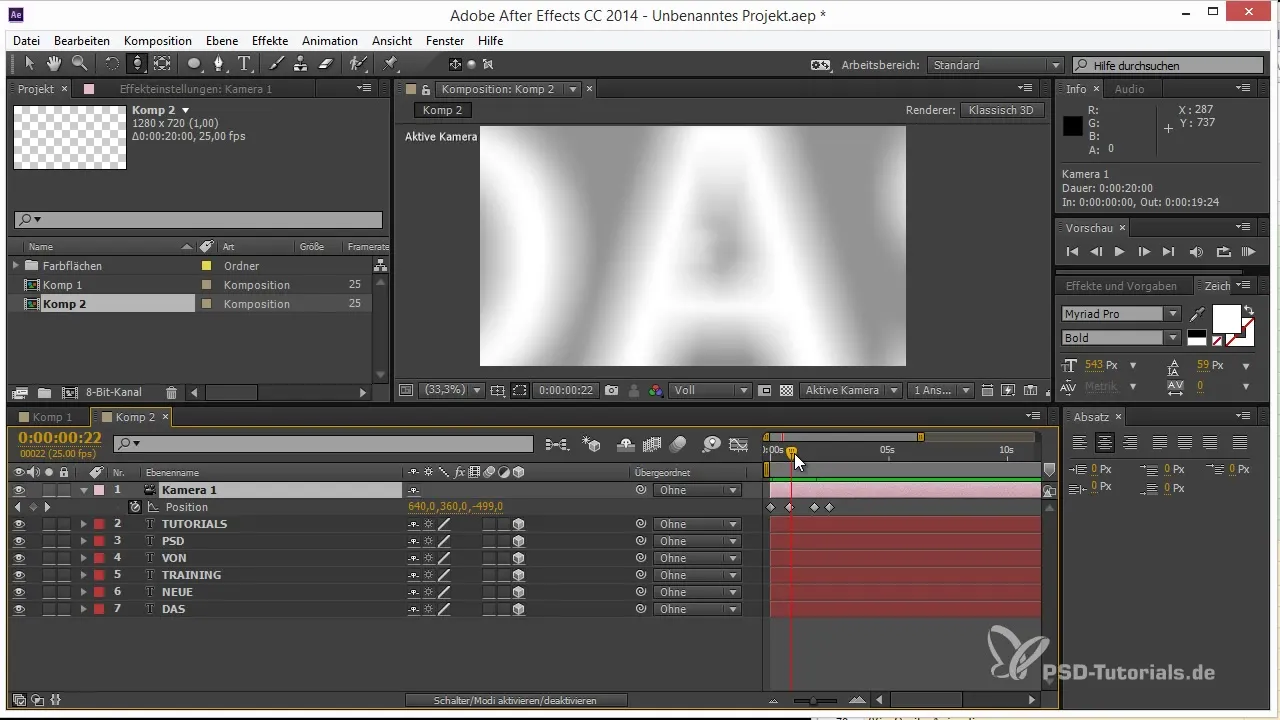
In summary, by using the one-node camera, you can enjoy simpler handling of the camera in After Effects. If you don’t need target point adjustments, this approach greatly simplifies your workflow.
Summary – Tips and Tricks for 3D in After Effects: Camera Types
The decision to choose between one-node and two-node cameras can significantly impact your workflow. By specifically using the one-node camera, you are not only more effective in creating animations, but you can also make your projects faster and more organized.
Frequently Asked Questions
How do I choose the right camera for my project?The one-node camera is ideal for simple movements without a target point, while the two-node camera is useful for more complex 3D animations.
Can I switch between camera types during the project?Yes, you can switch between camera types at any time to use the option that suits your needs.
What are the main advantages of the one-node camera?The one-node camera simplifies movements since you only need to adjust the position without worrying about the target point.


